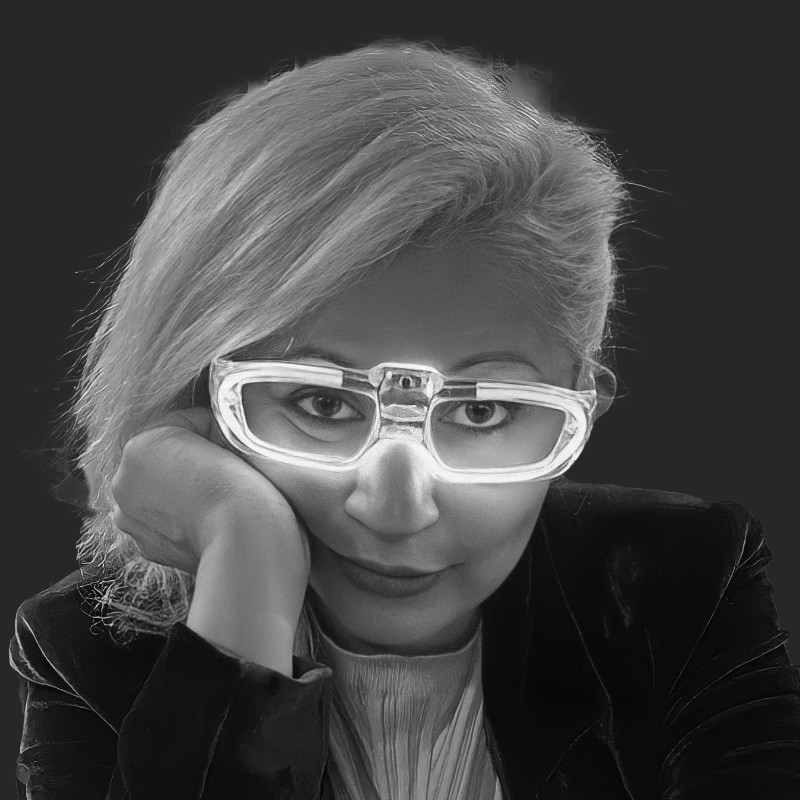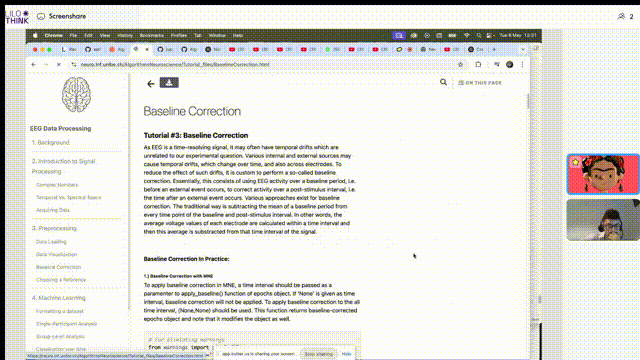Leandro Rafael Pérez is a rare kind of hybrid: a linguist by training, a reader at heart, and now a data scientist by craft. He comes from the world of letters, but never fully left it. He remains a thinker rooted in abstraction, with a deep sensitivity to language and its mechanisms.
When we met to talk, I brought him my usual tangle of questions about Creativity in vitro — a project that straddles science and code, but also concept and art. I told him how often I feel the need to share not only the outcomes, but the very texture of the process. The meta-process. The meta-design. The interior engine of reasoning that unfolds through gestures, conversations, scripts, improvisations, and doubt.
I explained the Codex — my effort to document these threads. Sometimes through blog posts, sometimes through drawings, sometimes by recording myself speaking. Not to reiterate the text, but to add layers that resist linear inscription. In this way, the video becomes a supralinguistic companion to the text — another form of saying the saying.
That’s when Leandro brought up Roman Jakobson and his idea of metalinguistic function — language that talks about language. In the arts, we often inhabit this recursive space: a painting about a painting, a performance that reflects on performance. But the moment we try to describe these works, we revert to spoken or written language.
This brought us to the divide — or entanglement — between orality and writing. Leandro mentioned Walter Ong, the 20th-century theorist who argued that technology would give rise to a secondary orality. I instantly recognized it. It’s what I see when my daughter sends voice messages to friends, or when I turn to YouTube tutorials to debug a patch in TouchDesigner. Orality is being reborn — not through mouths, but through screens.
I shared a metaphor: writing is like a photograph. It anchors an idea, it freezes meaning. Voice, on the other hand, is like a video — it breathes. It’s alive. Of course, writing gave us history, archives, laws. But the oral — the living — insists. And perhaps we are now returning to it, through new interfaces, new grammars, new bodies.
Then Leandro offered a phrase that stayed with me — compact, poetic, true:
Word riddles, solved by vectors in the mind of a machine…
It’s beautiful. A condensation of the entire architecture of modern language models. Words, stripped of their alphabetic identities, become positions in space — floating in a multidimensional matrix, where meaning arises from angles and proximity. Not from a dictionary, but from distance.
From there, we traced the lineage of this transformation back to the American school of linguistics, particularly to Noam Chomsky and his theory of generative grammar.
Chomsky and the Formal Turn in Linguistics
At the core of Chomsky’s theory is a radical proposal:
Language is not cultural — it is cognitive.
It is not learned — it is unfolded.
Chomsky introduced the idea of a universal grammar: an innate set of rules hardwired into the human brain, shared across all languages. This framework emphasized recursivity, the ability to nest one phrase inside another — as in:
“The woman who saw the man who lit the fire said…”
This capacity to generate infinite sentences from finite elements became the mathematical substrate of language. Syntax was no longer just a tool for communication; it was a window into the mind.
These ideas shaped not only linguistics, but computational models of language. The recursive structures and deep syntactic trees of generative grammar inspired the design of early natural language processing systems — and laid the conceptual groundwork for today’s LLMs.
📘 Aspects of the Theory of Syntax – Noam Chomsky (1965)

Pirahã Camp, near the Transamazonian Highway. Maici River. Photo: Ezequias Hering, 1981 source
And Then Came the Pirahã
A linguistic anomaly from the Amazon rainforest. A crack in the universalist dream.
The Pirahã are an Indigenous people living near the Maici River in the Brazilian Amazon, with a population of roughly 300. Their language, also called Pirahã, is spoken almost exclusively within the community — and it defies many of the supposed universals of human language.
We talked about Daniel Everett, a former Christian missionary and trained linguist who went to live among the Pirahã to translate the Bible. What he found instead was a worldview that dismantled much of what he had believed — linguistically, theologically, and epistemologically.
Everett reported that the Pirahã language lacks several features considered essential in generative grammar:
1. No Recursion
One of Chomsky’s most famous claims is that recursion — the ability to embed clauses inside clauses — is a universal feature of human language.
“João said that Maria thinks the dog ran away.”
According to Everett, the Pirahã don’t do this. Instead, they use short, simple statements in sequence:
“João spoke. Maria thought. The dog ran.”
This breaks a central rule of Chomskyan linguistics.
2. No Numbers
The Pirahã reportedly have no words for specific quantities — not even “one” or “two.” They rely on context and vague terms like “a few” or “many.”
This raises an uncomfortable question:
Is number sense truly universal?
Everett suggests that it’s cultural, not linguistic.
3. No Myths, No Distant Past
Pirahã culture emphasizes immediate personal experience. There are no origin stories, no accounts of distant ancestors, no abstract myths. If it wasn’t seen, it didn’t happen.
There may even be no grammatical past tense — only the living now.
Everett calls this the “Immediacy of Experience Principle.”
Everett documented all of this in his book:
Don’t Sleep, There Are Snakes (2008)
What This Means for AI — and for Creativity in vitro
If not all human minds speak the same mental code, what does that mean for the machines we train?
Modern LLMs are deeply influenced by Chomskyan logic: they learn structure, predict words recursively, and assume a certain architecture of thought.
But the Pirahã challenge that architecture. They hint at non-recursive cognition, non-quantified perception, and a grammar of immediacy.
In the context of Creativity in Vitro, these tensions become fertile:
-
What if language is not one thing, but many?
-
What if thought can be encoded otherwise — through gesture, sound, embodiment?
-
What happens when we let go of linguistic universals and design with situated language?
-
What if some intelligences — biological or artificial — resist recursion?
The Pirahã don’t just challenge grammar.
They challenge epistemology.
They bring us back to the body, the now, the lived.
And perhaps — to the possibility of other logics of language still to come.
Conclusion: Between Brain and World
So, is language embedded in the brain — or in the world? Perhaps it is both, and neither. Perhaps it is not a fixed structure waiting to be unfolded, but a dance between cognition and culture, body and environment, abstraction and presence. The Pirahã remind us that not all language conforms to recursion, number, or narrative. Their speech is rooted in what is seen, what is heard, what is lived — not what is imagined into layers of hypotheticals. And yet, machines trained on recursive logic, on grammars born in the halls of MIT, are now speaking back to us — guessing words through vectors, solving riddles through distance.
In Creativity in Vitro, this tension becomes terrain: the machine mind, the biological fragment, the voice, the writing, the gesture — all stitched together in an attempt to map not just language, but its limits. What emerges is not an answer, but a more precise kind of wondering. Because perhaps the real question is no longer where language is located, but how many languages of language we are yet to invent.
 Lina Lopes
Lina Lopes  Cerebral Sync - Week 6/13
Cerebral Sync - Week 6/13